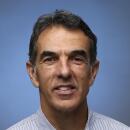Yearly Disaster Drill Proposed Each Jan. 17 : Preparedness: Mock emergency, including injuries and meetings, would be held annually to commemorate the Northridge temblor.
The Los Angeles City Council today will consider a proposal to hold a massive citywide emergency earthquake drill every Jan. 17--a date chosen to commemorate the devastating Northridge temblor.
The proposal by City Councilman Hal Bernson, chairman of an ad-hoc earthquake recovery committee, would call for a full-scale emergency quake drill--complete with fake injuries and emergency meetings--on the date of the Northridge quake.
For years, the city held emergency drills on an annual basis, usually in April to correspond with an earthquake-preparedness month. But the exercises have been canceled for the past two years because real emergencies--riots, floods, fires and volatile trials--have eliminated the need.
“When you are running people through the real thing every few months, you don’t have a need to put them through the exercise,” said Bob Canfield, an emergency preparedness coordinator for the city.
The annual exercises have used imaginary disaster scenarios, written by city emergency coordinators, to test the response of police, fire and other city departments, as well as some private businesses that volunteer to participate.
The city’s last full-scale earthquake exercise was held in April, 1990, when an imaginary 7.3-magnitude temblor hit along the Newport-Inglewood fault. City officials, some faking broken limbs, established an emergency command center in the parking lot of Dodger Stadium.
A smaller exercise was held the following April.
But the emergency exercise scheduled for April, 1992, was canceled due to the riots. Since then, the city’s Emergency Operations Center has been put on alert for five other declared disasters, including the floods and wildfires last year, Canfield said.
Canfield credited the annual exercises and the recent real-life emergencies for honing the response skills of local emergency agencies for the Northridge quake. “The response has been quite good,” he said.
Earthquake drills, like those proposed by Bernson, are a major annual event in Japan, where thousands of citizens are mandated by the government to participate in mock emergency exercises on the anniversary of the 1923 Kanto quake that killed almost 100,000 residents.
Bernson aide Greig Smith said the councilman wants the city to launch full-scale emergency exercises every Jan. 17, specifically to practice the response of emergency crews to a major earthquake. The January exercise would replace the April drills.
He said he was told that the full-scale exercises had been eliminated because of cost.
But, Smith said, the improved emergency response skills that will result from the exercises are well worth the added cost.
Frank Borden, the Los Angeles Fire Department’s chief of training, agreed, saying “it’s a good idea to bring back the exercise in a large scale.”
He said the city has held smaller drills, in which city agencies are simply asked how they would respond to a particular emergency. But Borden said it is important to annually test the departments to see how they respond in a simulated emergency.
Shirley Mattingly, chief analyst for the city’s office of emergency management, said she too supports annual full-scale exercises. But because the exercises are a “massive undertaking,” she said she would like to be able to cancel the annual drill if a real disaster puts the city’s emergency response to the test.
More to Read
Sign up for Essential California
The most important California stories and recommendations in your inbox every morning.
You may occasionally receive promotional content from the Los Angeles Times.











